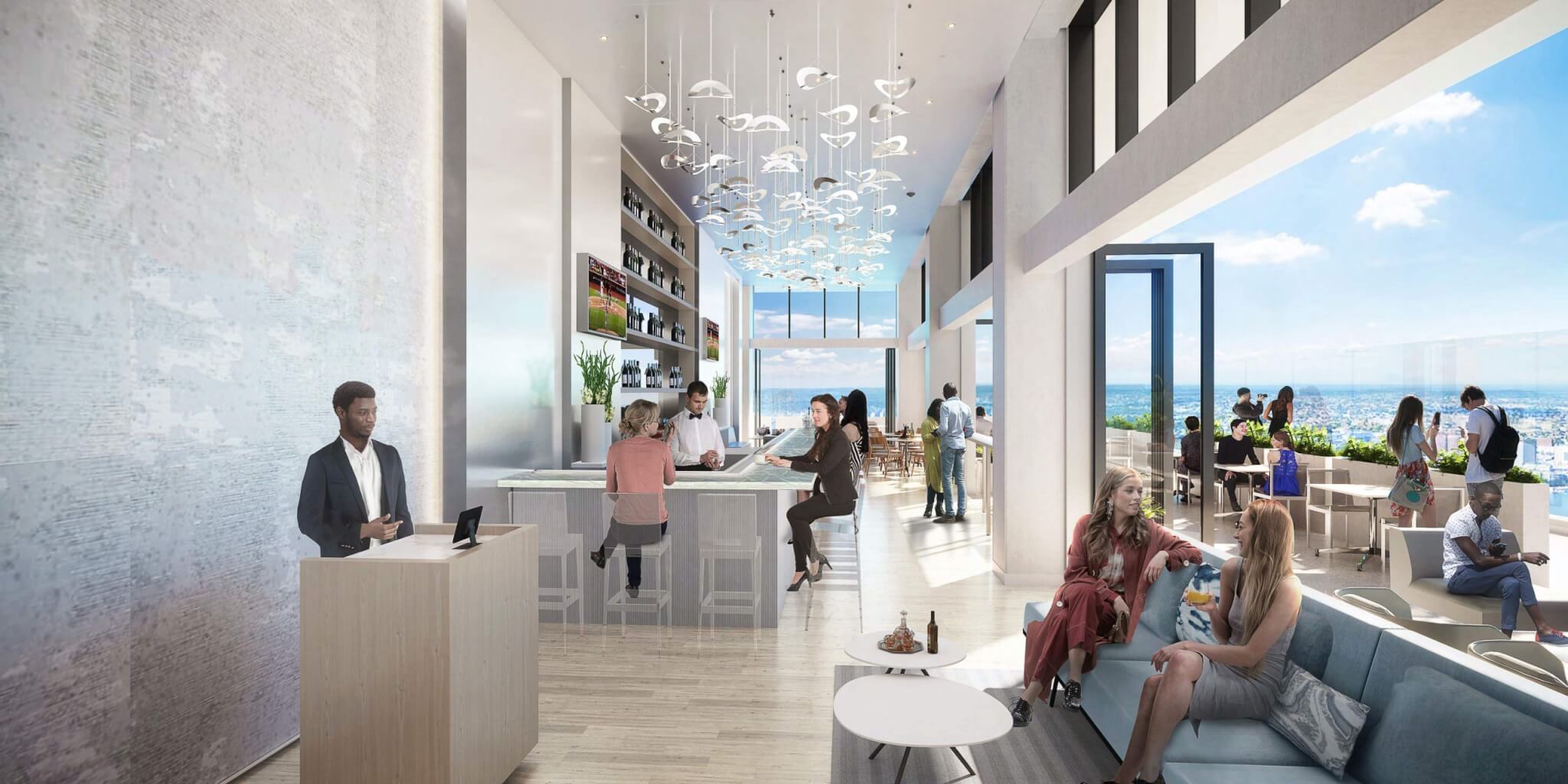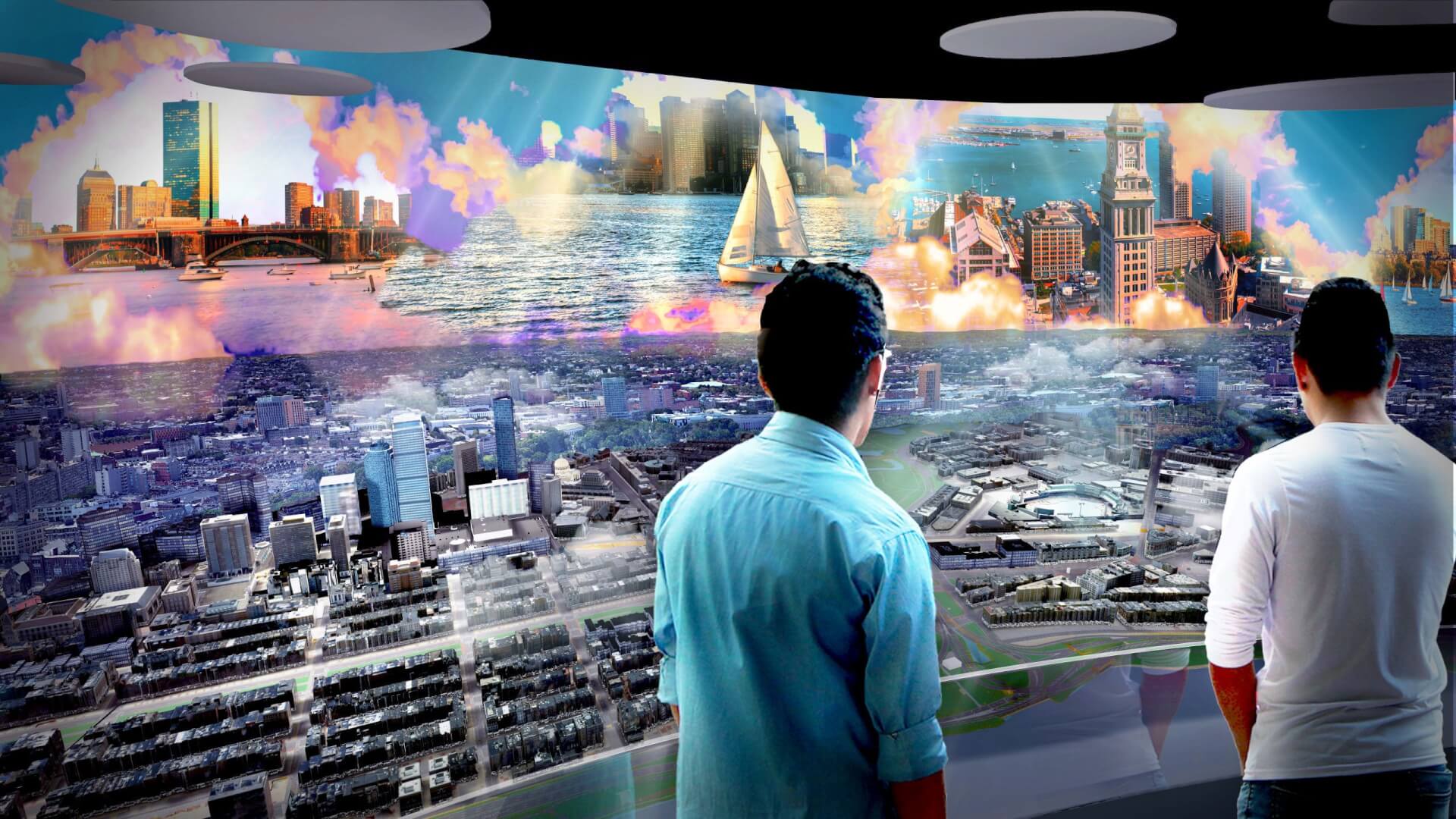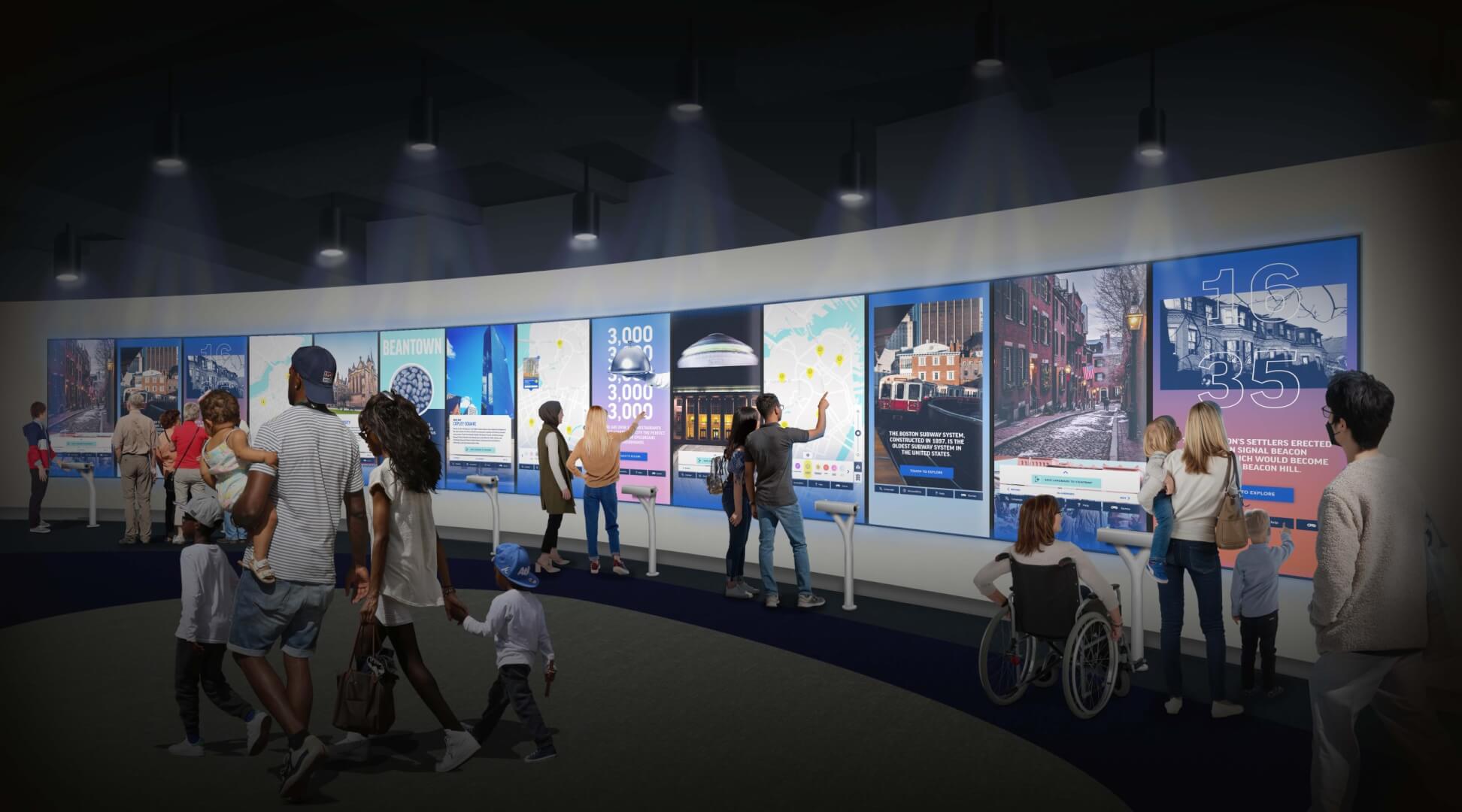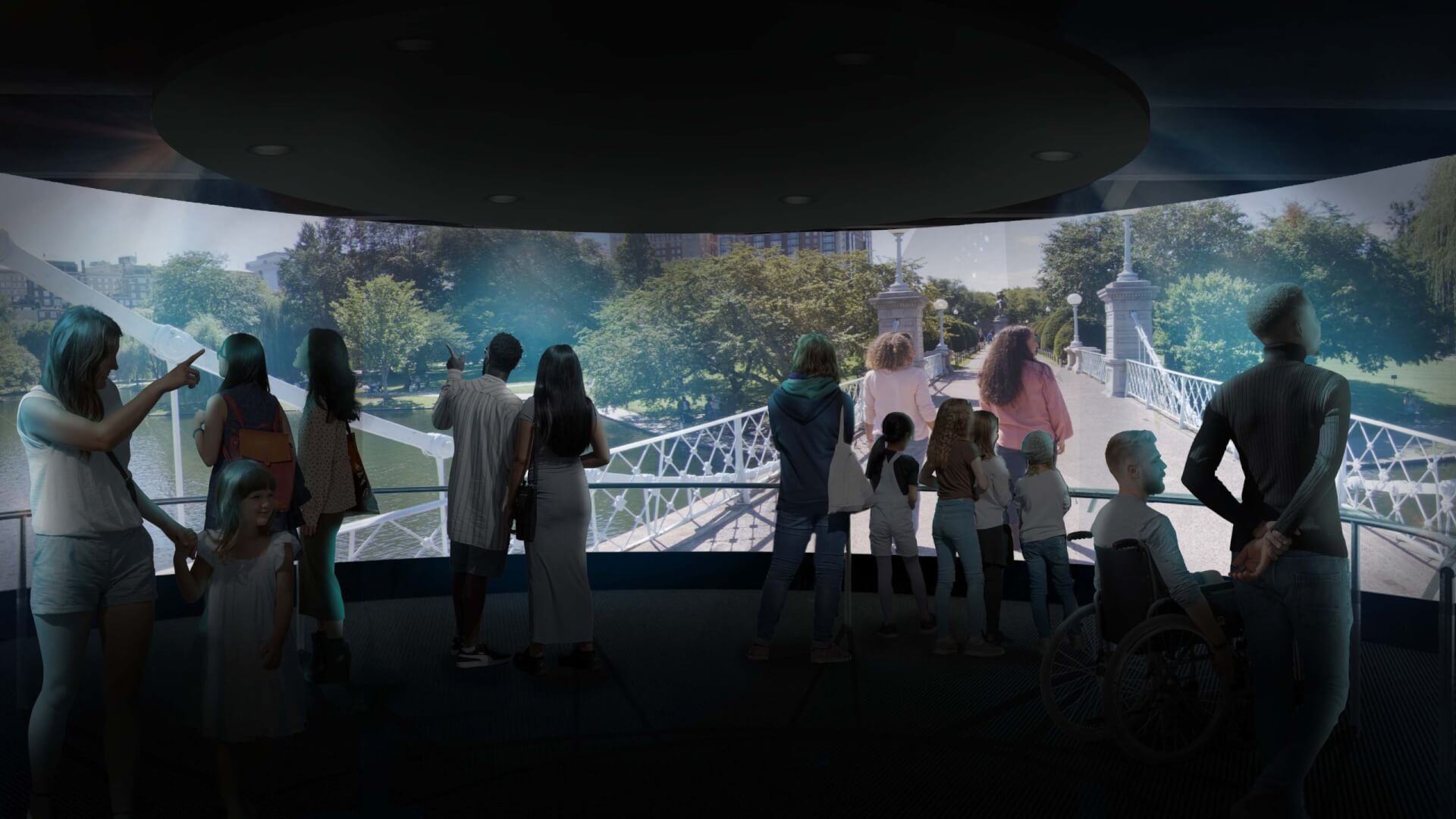Without all of the many, many antennas that are attached to the roof now, it is great design, though one that certainly has some dated elements. I understand the necessity of them but there are certainly creative, modern ways to design a caging system or stepped design to encase all of them while highlighting or incorporating the large center one. Plus there's the added additional height bonus that would push it up to or beyond 900', for admitted height fetishists like me. I have a similar complaint with the new stacked-box BU tower whose roof is a mess of exposed ventilation things, antennas, random other crap, all of which could be blocked had they just extended up that curved cage-thing.
You are using an out of date browser. It may not display this or other websites correctly.
You should upgrade or use an alternative browser.
You should upgrade or use an alternative browser.
View Boston (Observatory) | Prudential Tower | Back Bay
- Thread starter Equilibria
- Start date
Equilibria
Senior Member
- Joined
- May 6, 2007
- Messages
- 7,083
- Reaction score
- 8,310
Without all of the many, many antennas that are attached to the roof now, it is great design, though one that certainly has some dated elements. I understand the necessity of them but there are certainly creative, modern ways to design a caging system or stepped design to encase all of them while highlighting or incorporating the large center one. Plus there's the added additional height bonus that would push it up to or beyond 900', for admitted height fetishists like me. I have a similar complaint with the new stacked-box BU tower whose roof is a mess of exposed ventilation things, antennas, random other crap, all of which could be blocked had they just extended up that curved cage-thing.
I think that if you removed all the antennas and added a sculptural spire just to hit 900' on a building that has existed for 60 years, no one would take the new height seriously.
That might be a good thing (because official building heights are misleading lies) but I wouldn't see it as making the building "taller" unless you added habitable floors.
I think that if you removed all the antennas and added a sculptural spire just to hit 900' on a building that has existed for 60 years, no one would take the new height seriously.
That might be a good thing (because official building heights are misleading lies) but I wouldn't see it as making the building "taller" unless you added habitable floors.
As a urban/architecture nerd, I'm 100% with you. But I don't know that the average person would feel the same way. It'd look visibly taller to anyone who's not familiar with the official metrics for building heights which is the vast majority of people. Whether there was a way to do it that's not offensive to the Pru's International-style roots is another question.
Equilibria
Senior Member
- Joined
- May 6, 2007
- Messages
- 7,083
- Reaction score
- 8,310
As a urban/architecture nerd, I'm 100% with you. But I don't know that the average person would feel the same way. It'd look visibly taller to anyone who's not familiar with the official metrics for building heights which is the vast majority of people. Whether there was a way to do it that's not offensive to the Pru's International-style roots is another question.
The right way to do it would be to jack the cab up 200 feet and add in 20 new floors underneath in the same style a la BCBS in Chicago, but I doubt the structure could handle that.
The right way to do it would be to jack the cab up 200 feet and add in 20 new floors underneath in the same style a la BCBS in Chicago, but I doubt the structure could handle that.
It'd be great if they could do that. I'm all for the height, but the Pru is a fairly unique structure and I hate to see the design modified too much.
I don't think any metric of measurement uses "habitable floors" as the rationale behind measuring a building's actual height. There are countless buildings with around the same number of floors as the Pru or Hancock that have structural elements (fins, stepped spires, crowns etc) that push them to close to 1000' and I don't think most people would take that away from their heights. I personally don't think that the majority of people would object to an addition that's done right, cleans up the antenna mess and gives it a retro-modern stepped nod to its little neighbor down the block, the smaller Hancock building. If the antenna/spire was made bigger, taller, and lit up, it would add a much-needed non-flat roof to the skyline and really play off its shorty Back Bay neighbor very well. The little antennas could even be included like little spikes around the edges of the steps. Just pondering the possibilities...I think that if you removed all the antennas and added a sculptural spire just to hit 900' on a building that has existed for 60 years, no one would take the new height seriously.
That might be a good thing (because official building heights are misleading lies) but I wouldn't see it as making the building "taller" unless you added habitable floors.
I don't think any metric of measurement uses "habitable floors" as the rationale behind measuring a building's actual height. There are countless buildings with around the same number of floors as the Pru or Hancock that have structural elements (fins, stepped spires, crowns etc) that push them to close to 1000' and I don't think most people would take that away from their heights. I personally don't think that the majority of people would object to an addition that's done right, cleans up the antenna mess and gives it a retro-modern stepped nod to its little neighbor down the block, the smaller Hancock building. If the antenna/spire was made bigger, taller, and lit up, it would add a much-needed non-flat roof to the skyline and really play off its shorty Back Bay neighbor very well. The little antennas could even be included like little spikes around the edges of the steps. Just pondering the possibilities...
This is peak nerd, but the Council on Tall Buildings and Urban Habit uses "height to highest occupied floor" as one of its three primary criteria for standardized measurement of tall buildings. It's not that they're comparing the number of floors, but that the measurement of the building is from the base to highest occupied or occupiable floor (in meters/feet, not stories). That's what I assume is meant by "habitable floors." The other two criteria are "height to architectural top," and "height to tip." The antenna at the Pru is not structural, so it only "counts" when measuring "height to tip." But an ornamental cage built to include a functional antenna would presumably be counted as structural and add to the official height under the height to architectural top category. The height to the highest occupied floor wouldn't change.
Finding meaning in "height to highest occupiable floor" makes some horse-sense when considering overall height, but I've always found the hardline distinction between "height to architectural top" and "height to tip" to be dogmatic and pedantic silliness.
To me, the Pru is just over 900' (907, "officially"). If folks want to agree that it tops out at 749' that's, of course, fine. I just think the criteria is more than a little arbitrary.
As a litmus test, for those who are firmly in the "Standard height" camp (749'), here's a litmus test: next time you have friends or family visiting who are not familiar with Boston and/or don't really obsess particularly over architectural details such as "accepted heights" of towers within the community, ask them -- when, say, across the Charles and looking at the High Spine, which they consider to be the taller building, the JHT or the Pru. I've done this a handful of times (or something similar) and not once has anyone ever selected the Hacock, or even had much of an internal mental debate before responding that the Prudential is taller.
I've expressed similar before and plenty disagree -- which, again: fine -- but, to me, the spire that they added to One World Trade Center/Freedom Tower is an even more... suspect, or "cheating" way to achieve on-record height that is acceptable to the arbiters of these things than counting the Pru's broadcast antenna. That the Pru's antenna is actually functional, rather than purely decorative to bolster the Freedom Tower's height to 1776', makes it (to me) even *more* fair-game to consider when determining its height.
If the Pru is 749' then (to me) One World Trade Center tops out at 1,368'.
All that having been said, if adding a cage or whatever would satisfy... whoever needs to be satisfied about such things for it to e considered truly to be 907', then sure. Why not I guess? I don't really see the point, but it could look neat.
To me, the Pru is just over 900' (907, "officially"). If folks want to agree that it tops out at 749' that's, of course, fine. I just think the criteria is more than a little arbitrary.
As a litmus test, for those who are firmly in the "Standard height" camp (749'), here's a litmus test: next time you have friends or family visiting who are not familiar with Boston and/or don't really obsess particularly over architectural details such as "accepted heights" of towers within the community, ask them -- when, say, across the Charles and looking at the High Spine, which they consider to be the taller building, the JHT or the Pru. I've done this a handful of times (or something similar) and not once has anyone ever selected the Hacock, or even had much of an internal mental debate before responding that the Prudential is taller.
I've expressed similar before and plenty disagree -- which, again: fine -- but, to me, the spire that they added to One World Trade Center/Freedom Tower is an even more... suspect, or "cheating" way to achieve on-record height that is acceptable to the arbiters of these things than counting the Pru's broadcast antenna. That the Pru's antenna is actually functional, rather than purely decorative to bolster the Freedom Tower's height to 1776', makes it (to me) even *more* fair-game to consider when determining its height.
If the Pru is 749' then (to me) One World Trade Center tops out at 1,368'.
All that having been said, if adding a cage or whatever would satisfy... whoever needs to be satisfied about such things for it to e considered truly to be 907', then sure. Why not I guess? I don't really see the point, but it could look neat.
I agree with pretty much everything you're saying. I wasn't pondering just for the added height but rather how it could be more aesthetically pleasing (to some) if the messiness that's currently up on top were eliminated, to further amplify the effort they've put in to the observation deck, new signage, cleaning etc they just completed. I'm all for periodic updates to the classics!Finding meaning in "height to highest occupiable floor" makes some horse-sense when considering overall height, but I've always found the hardline distinction between "height to architectural top" and "height to tip" to be dogmatic and pedantic silliness.
To me, the Pru is just over 900' (907, "officially"). If folks want to agree that it tops out at 749' that's, of course, fine. I just think the criteria is more than a little arbitrary.
As a litmus test, for those who are firmly in the "Standard height" camp (749'), here's a litmus test: next time you have friends or family visiting who are not familiar with Boston and/or don't really obsess particularly over architectural details such as "accepted heights" of towers within the community, ask them -- when, say, across the Charles and looking at the High Spine, which they consider to be the taller building, the JHT or the Pru. I've done this a handful of times (or something similar) and not once has anyone ever selected the Hacock, or even had much of an internal mental debate before responding that the Prudential is taller.
I've expressed similar before and plenty disagree -- which, again: fine -- but, to me, the spire that they added to One World Trade Center/Freedom Tower is an even more... suspect, or "cheating" way to achieve on-record height that is acceptable to the arbiters of these things than counting the Pru's broadcast antenna. That the Pru's antenna is actually functional, rather than purely decorative to bolster the Freedom Tower's height to 1776', makes it (to me) even *more* fair-game to consider when determining its height.
If the Pru is 749' then (to me) One World Trade Center tops out at 1,368'.
All that having been said, if adding a cage or whatever would satisfy... whoever needs to be satisfied about such things for it to e considered truly to be 907', then sure. Why not I guess? I don't really see the point, but it could look neat.
Java King
Active Member
- Joined
- Apr 6, 2007
- Messages
- 986
- Reaction score
- 2,049
All that having been said, if adding a cage or whatever would satisfy... whoever needs to be satisfied about such things for it to e considered truly to be 907', then sure. Why not I guess? I don't really see the point, but it could look neat.
I don't care if the Pru is 100 feet or 1000 feet. I just don't like looking at all the communication garbage at the top. I feel the SAME way about any mechanical infrastructure that isn't hidden architecturally such as vents, pipes, fans, cooling towers, washing equipment, etc. The building can be 1 story or 100 stories, but a little thoughtful design goes a long way.
Here is a recent building in Scituate that bothers me because the mechanical ventilation is not fully covered by the fence.
Last edited:
Finding meaning in "height to highest occupiable floor" makes some horse-sense when considering overall height, but I've always found the hardline distinction between "height to architectural top" and "height to tip" to be dogmatic and pedantic silliness.
To me, the Pru is just over 900' (907, "officially"). If folks want to agree that it tops out at 749' that's, of course, fine. I just think the criteria is more than a little arbitrary.
As a litmus test, for those who are firmly in the "Standard height" camp (749'), here's a litmus test: next time you have friends or family visiting who are not familiar with Boston and/or don't really obsess particularly over architectural details such as "accepted heights" of towers within the community, ask them -- when, say, across the Charles and looking at the High Spine, which they consider to be the taller building, the JHT or the Pru. I've done this a handful of times (or something similar) and not once has anyone ever selected the Hacock, or even had much of an internal mental debate before responding that the Prudential is taller.
I've expressed similar before and plenty disagree -- which, again: fine -- but, to me, the spire that they added to One World Trade Center/Freedom Tower is an even more... suspect, or "cheating" way to achieve on-record height that is acceptable to the arbiters of these things than counting the Pru's broadcast antenna. That the Pru's antenna is actually functional, rather than purely decorative to bolster the Freedom Tower's height to 1776', makes it (to me) even *more* fair-game to consider when determining its height.
If the Pru is 749' then (to me) One World Trade Center tops out at 1,368'.
All that having been said, if adding a cage or whatever would satisfy... whoever needs to be satisfied about such things for it to e considered truly to be 907', then sure. Why not I guess? I don't really see the point, but it could look neat.
^Yeah, I think there's a pretty dramatic difference between the people on forums like this diving into the weeds on this stuff and the real-world experience of the average person. As a kid I used to think the Pru was taller because of the antenna. And the line between a structural spire (especially like the WTC spire) and an antenna added on afterwards like the Pru's is non-existent to anyone who doesn't spend a whole lot of time reading about skyscrapers on Wikipedia. The antenna is part of the Pru's identity (in a similar way to the Willis/Sears Tower and Chicago JHT's antennae) and most observers don't differentiate.
I mean, I know there existed stats around listing "height to highest occupied floor" but it only seems relevant for safety's sake and when considering things like observation decks or penthouse heights, purely for claims on views. I definitely see how it is factored in though, otherwise it would be more about a structure (like the CN Tower) more than a building.This is peak nerd, but the Council on Tall Buildings and Urban Habit uses "height to highest occupied floor" as one of its three primary criteria for standardized measurement of tall buildings. It's not that they're comparing the number of floors, but that the measurement of the building is from the base to highest occupied or occupiable floor (in meters/feet, not stories). That's what I assume is meant by "habitable floors." The other two criteria are "height to architectural top," and "height to tip." The antenna at the Pru is not structural, so it only "counts" when measuring "height to tip." But an ornamental cage built to include a functional antenna would presumably be counted as structural and add to the official height under the height to architectural top category. The height to the highest occupied floor wouldn't change.
Jahvon09
Senior Member
- Joined
- Oct 2, 2011
- Messages
- 3,358
- Reaction score
- 824
Here's a rendering of how the Bar & Bistro will look!! Click on the link below.
 viewboston.com
viewboston.com
BAR & BISTRO - View Boston
From seasonally inspired cocktails to classic Bostonian dishes, our menus satiate all cravings. Get ready to dine in the clouds.
dhawkins
Active Member
- Joined
- Jan 25, 2014
- Messages
- 892
- Reaction score
- 3,150
Here's a rendering of how the Bar & Bistro will look!! Click on the link below.
BAR & BISTRO - View Boston
From seasonally inspired cocktails to classic Bostonian dishes, our menus satiate all cravings. Get ready to dine in the clouds.viewboston.com
I could go for a drink in the indoor area with the swing doors open. I'm sure they will only be open on days with very little wind!
Jahvon09
Senior Member
- Joined
- Oct 2, 2011
- Messages
- 3,358
- Reaction score
- 824
I could go for a drink in the indoor area with the swing doors open. I'm sure they will only be open on days with very little wind!
View attachment 34618
That looks so nice!!!! Looks like there will be outdoor seating in the summer!!
Last edited:
stick n move
Superstar
- Joined
- Oct 14, 2009
- Messages
- 12,076
- Reaction score
- 18,830
Here's a rendering of how the Bar & Bistro will look!! Click on the link below.
BAR & BISTRO - View Boston
From seasonally inspired cocktails to classic Bostonian dishes, our menus satiate all cravings. Get ready to dine in the clouds.viewboston.com
Very nice! This bar will definitely be a hit.

3d model of the city, will be pretty cool to experience.

This is a great idea: “interactive neighborhood discovery tool to explore various neighborhoods and locate attractions, restaurants and landmarks of interest based your individual taste.”
I remember reading about this, they want to encourage tourists to venture out into the many different diverse neighborhoods we have vs just going to fanuel hall and the freedom trail. Im all for it!

IMMERSIVE THEATER:
Be enveloped by this 270-degree screen showcasing street-level exploration of various neighborhoods and behind-the-scenes perspective from some of Boston’s most beloved attractions, including Fenway Park!


 IMG_0412
IMG_0412